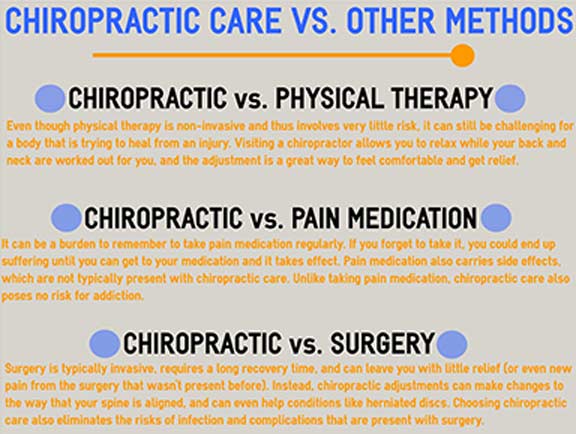A Day In The Life Of A Pain In The Back Patient: Tips For Handling Pain At The Workplace
A Day In The Life Of A Pain In The Back Patient: Tips For Handling Pain At The Workplace
Blog Article
Web Content By-Udsen Myrick
Think of browsing with your workday with a continuous tip of discomfort remaining in your back. The struggle to locate alleviation while juggling tasks can be daunting. Nevertheless, with the appropriate strategies in position, managing your neck and back pain at the workplace can be much less of a burden. By making simple adjustments to your work area and integrating targeted methods, you can take control of your pain and boost your performance. Remain tuned to uncover sensible ideas that might make a significant distinction in your day-to-day work regimen.
Common Triggers of Back Pain
When it pertains to taking care of pain in the back at the office, recognizing the usual triggers is crucial. Poor posture ranks high amongst these triggers. Resting stooped over at your desk for prolonged periods can strain your back muscle mass and lead to discomfort.
Lifting heavy things inaccurately is another culprit. Bear in mind to flex your knees and use your legs, not your back, when raising to avoid unnecessary strain.
Lack of motion throughout the day can likewise add to pain in the back. Make an aware initiative to take time-outs to extend and walk around, as long term sitting can aggravate discomfort.
Additionally, tension is a considerable trigger for pain in the back. High tension degrees can trigger muscle mass tension, particularly in the back area, causing discomfort. It's essential to find healthy ways to handle anxiety, such as deep breathing workouts or mindfulness strategies.
who chiropractic care centre but not least, insufficient functional designs in your work space can also bring about neck and back pain. Ensuring your chair, desk, and computer arrangement are ergonomically friendly can make a considerable difference in reducing pressure on your back.
Ergonomic Workstation Setup
To develop a work space that sustains your back health and lowers the risk of pain, concentrating on an ergonomic workstation configuration is vital.
Beginning by changing your chair to make sure that your feet are level on the floor, knees are at a 90-degree angle, and your reduced back is sustained by the chair's lumbar assistance.
Ensure your computer system screen is at eye degree to avoid straining your neck and shoulders.
Position your keyboard and mouse close to you to stop getting to and stressing your arms.
Take normal breaks to stand, stretch, and walk to reduce stiffness and advertise blood circulation.
Think about making use of a standing desk or a workdesk converter to alternating between resting and standing throughout the day.
Keep in mind to maintain regularly used things within arm's reach to prevent twisting or overreaching.
Energetic Techniques for Pain Alleviation
Trying to find ways to actively alleviate back pain while at work? Incorporating basic yet reliable methods can help minimize discomfort and improve your productivity. Begin by taking short breaks throughout the day to extend and move around.
Gentle exercises like shoulder rolls, neck stretches, and standing hamstring stretches can loosen up tight muscle mass and ease stress. Additionally, practicing great posture is important for lowering back pain. Sit up right, adjust your chair to support your reduced back, and keep your feet level on the floor.
Taking lower back pain symptoms in normal physical activity beyond work can additionally add to discomfort alleviation. Tasks such as walking, swimming, or yoga can strengthen your back muscle mass and improve versatility, bring about much better discomfort administration over time. Keep in mind to remain hydrated and preserve a healthy and balanced diet to support total spinal column health.
Additionally, take into consideration utilizing ergonomic tools like back paddings or standing workdesks to advertise proper alignment and decrease strain on your back. By proactively incorporating these strategies into your day-to-day regimen, you can proactively manage neck and back pain and boost your comfort at the office.
Final thought
Finally, by executing these proactive methods at the workplace, you can effectively manage your back pain and boost your total health. Remember to produce an ergonomic workstation setup, take routine breaks to extend, participate in gentle workouts, and maintain excellent posture. With these ideas, you can alleviate the influence of neck and back pain and make your workday more comfy and efficient. Stay proactive and look after your back to feel better at the workplace.
